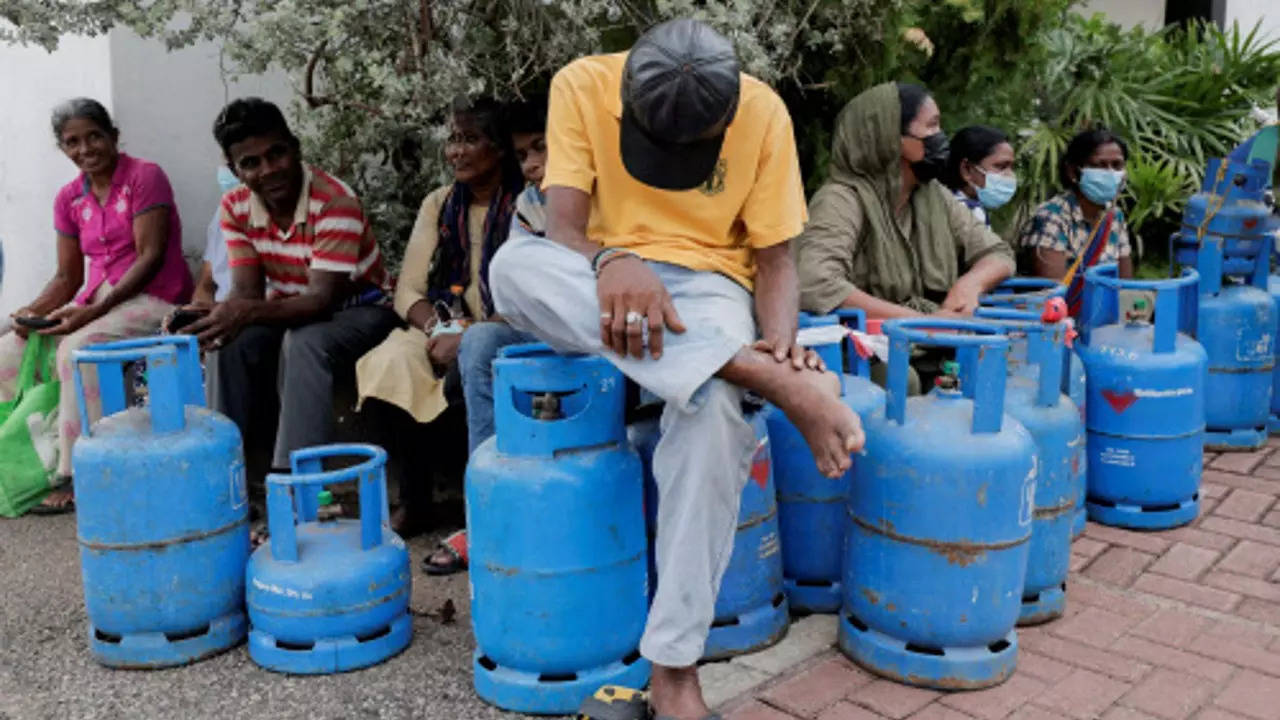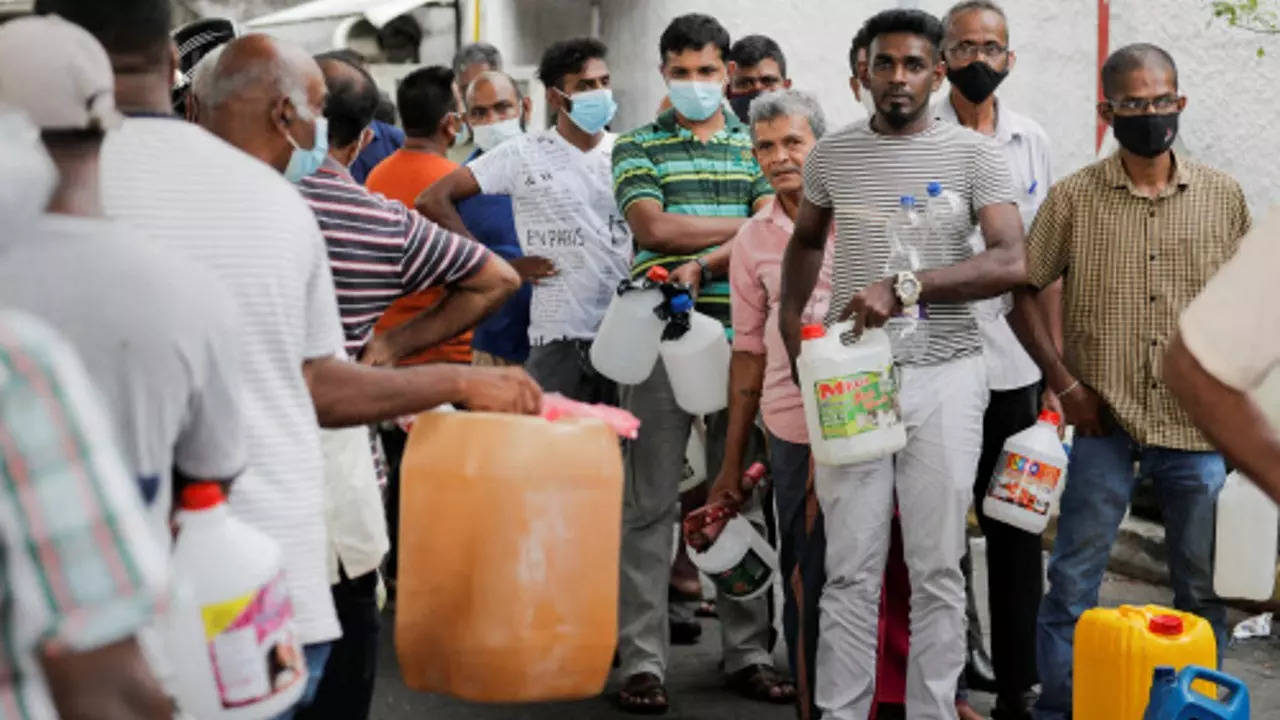
NEW DELHI: Grappling with its worst economic crisis since the country got independence in 1948, Sri Lanka on Tuesday announced a default of $51 billion on foreign debt.
"We have lost the ability to repay foreign debt," Sri Lanka's Central Bank governor Nandalal Weerasinghe told reporters in Colombo.
Suspension of external debt payments is a last resort for the country as it tries to conserve cash for emergency supplies like fuel, food, gas, medicine and other essential items for its people.
Sri Lanka has foreign debt payments of around $4 billion due this year, including a $1 billion international sovereign bond maturing in July.
The finance ministry has suspended payments on about $7 billion in debt to bondholders, institutions and countries that have lent the country money.
The country has been struggling since long to make foreign loan payments. Just under half of Sri Lanka's debt is market borrowings through international sovereign bonds, including one worth $1 billion that was maturing on July 25.
The crisis was further fueled by Covid-19 pandemic which restricted vital revenues for the country from tourism and remittances.
Estimates showed Sri Lanka needed $7 billion to service its debt load this year, against just $1.9 billion in reserves at the end of March.
Caught in strategic debt trap
China is Sri Lanka's largest bilateral lender and owns about 10 per cent of the island's foreign debt, followed by Japan and India.
The balance of payment (BOP) crisis has been quite prevalent in the country, which compelled the government to seek external help for its troubles. This led to the country's increased reliance on China, which played a crucial role in its development.
The government has borrowed heavily from Beijing since 2005 for infrastructure projects, many of which became white elephants.
Sri Lanka also leased its strategic Hambantota port to a Chinese company in 2017 after it became unable to service the $1.4 billion debt from Beijing used to build it.
This sparked concerns from Western countries and India that the strategically located South Asian nation was falling victim to a debt trap.

Sri Lanka's total debt to China stands at $8 billion, almost one-sixth of its total external debt of $45 billion. For this year, it owes about $1.5 billion- $2 billion to China.
To begin with, reckless borrowing from China for unprofitable infrastructure projects are responsible to a large extent in putting the country in this position, a recent report in Hong Kong Post had said.
According to reports, China had refused to respond to Sri Lanka's appeal to reschedule its huge debts or offer concessions in repayments.
However, Chinese foreign ministry spokesman Zhao Lijian on Tuesday's said that default would not stop Beijing from lending support to Sri Lanka's beleaguered economy.
"China has always done its best in providing assistance to Sri Lanka's economic and social development. We will continue to do so in the future," he said.
However, it continues to maintain a steady stance on Sri Lanka's request for debt rescheduling as well as extending the promised $2.5 billion assistance.
India provides helping hand
Ahead of the Sinhala and Tamil New Year, India sent a shipment of 11,000 MT of rice to help people of Sri Lanka celebrate one of their biggest festivals.
India had recently announced a $1 billion line of credit to Sri Lanka as part of its financial assistance to the country to deal with the economic crisis following a previous $500 billion line of credit in February to help it purchase petroleum products.
Indian credit lines to boost reserves and importation of essentials have provided a temporary lifeline to the Sri Lankan economy.
In addition to this, India has already supplied over 270,000 MT of fuel to Sri Lanka.
In November 2021, India had given 100 tonnes of nano nitrogen liquid fertilizers to Sri Lanka as their government stopped the import of chemical fertilizers.
Besides, the Reserve Bank of India (RBI) has extended a currency swap of $400 million and deferred payments owed by the Central Bank of Sri Lanka under the Asian Clearance Union worth several hundred million dollars.
According to ANI report, India recently pledged to donate medicines to Peradeniya Hospital, which was running low on supplies due to the US dollar crisis and purchasing medicines became impossible.
Acute shortages remain
The situation is so grim that people in the country are fighting for daily need items. The country has been hit with shortages of various essential products, including medicines. Besides, long hours of power cuts everyday has disrupted life.
Soaring inflation rate has made it further difficult for people items of daily needs.
Two days back, doctors raised warning they were nearly out of life-saving medicines and said the island nation's economic crisis threatened a worse death toll than the coronavirus pandemic.
The Sri Lanka Medical Association (SLMA) said that all hospitals in the country no longer had access to imported medical tools and vital drugs.
Several facilities have already suspended routine surgeries since last month because they were dangerously low on anaesthetics, but the SLMA had said that even emergency procedures may not be possible very soon.
The forex shortage has crippled its ability to pay for fuel imports, has adversely impacted lives. People are having to stand in long queues to receive even cooking oil. Reports suggest almost 8 people have lost their lives since March 20 while waiting in queues.

Protests continue
People in the country have been protesting continuously since the past few days, calling for Rajapaksa's resignation.
Thousands of people braved heavy rains to keep up a demonstration outside the leader's seafront office in the capital Colombo for a second day.
Business leaders joined calls for the president to step down on Saturday and said the island's chronic fuel shortages had seen their operations haemorrhage cash.

Rajapaksa's government is seeking an IMF bailout to help extricate Sri Lanka from the crisis, which has seen skyrocketing food prices and the local currency collapse in value by a third in the past month.
Finance ministry officials have said sovereign bond-holders and other creditors may have to take a haircut as Colombo seeks to restructure its debt.
New finance minister Ali Sabry told parliament on Friday that he expects $3 billion from the IMF to support the island's balance of payments in the next three years.
Govt to seek IMF for bail out
Some analysts have criticised Rajapaksa's administration for its decision in 2019 to make deep tax cuts and delay talks with the International Monetary Fund (IMF).
The Sri Lankan government has now sought a loan restructuring program with the IMF to deal with the nation's worst economic crisis in decades.
"Sri Lanka has had an unblemished record of external debt service since independence in 1948," the ministry of finance said in a statement.
"Recent events, however, including the effects of the Covid-19 pandemic and the fallout from the hostilities in Ukraine, have so eroded Sri Lanka's fiscal position that continued normal servicing of external public debt obligations has become impossible," it added.
The ministry said the IMF has assessed Sri Lanka's foreign debt as unsustainable, and staying current on foreign debt repayment is no longer a tenable policy.
However, until it reaches an agreement with IMF the country might face trouble in borrowing more money.
(With inputs from agencies)







